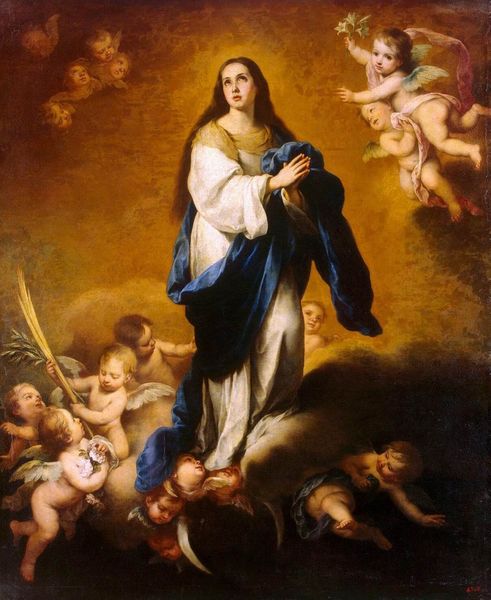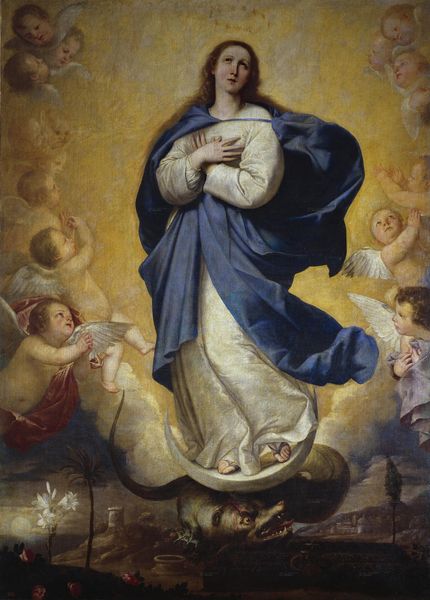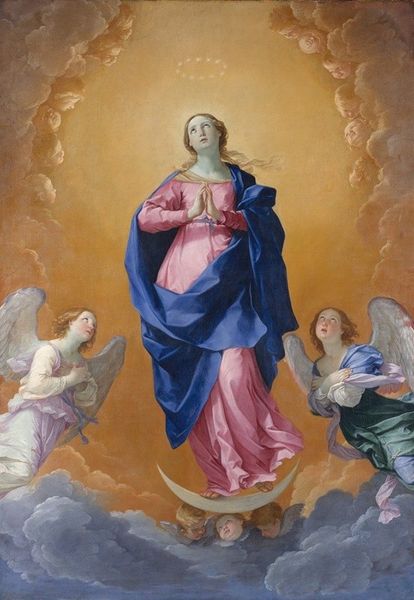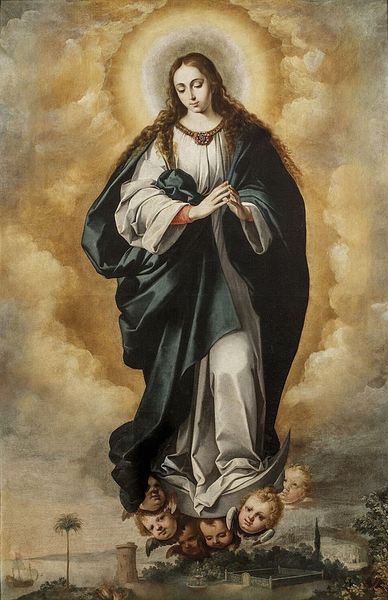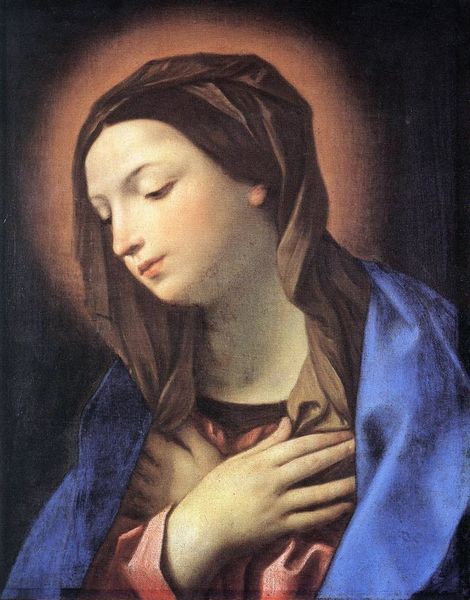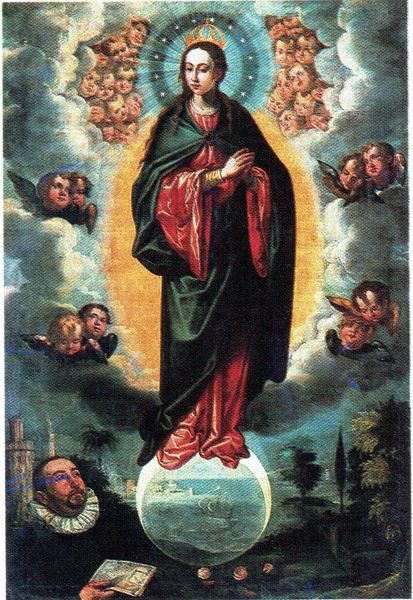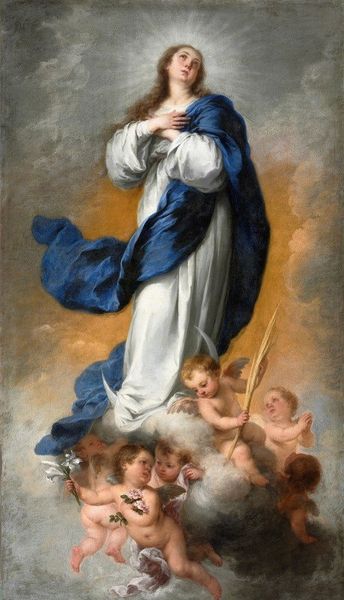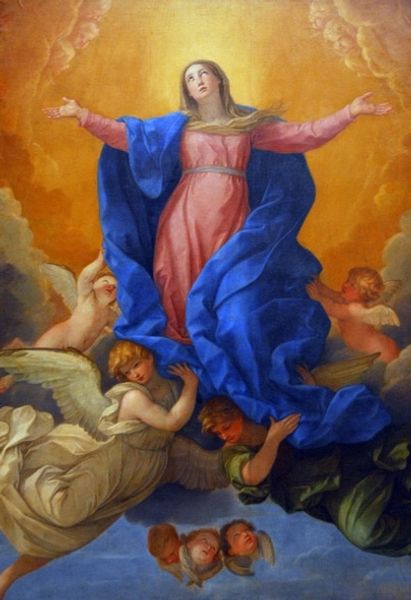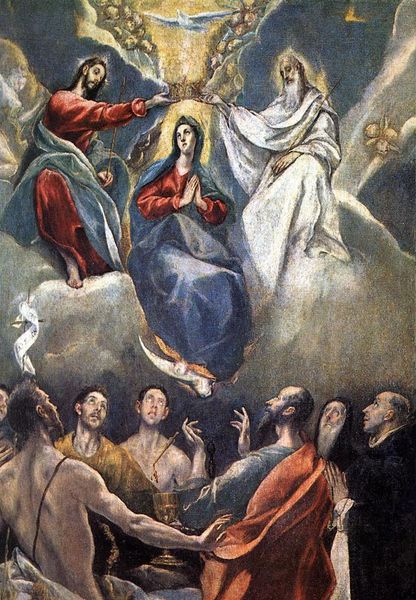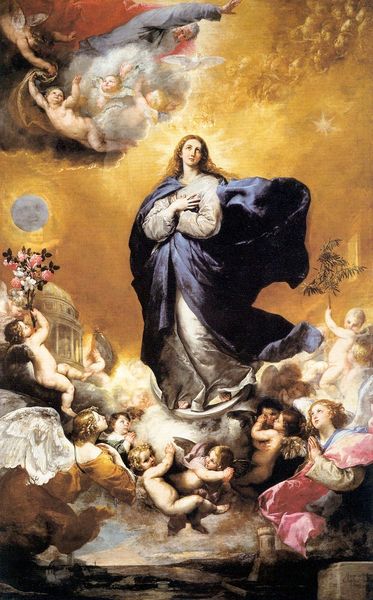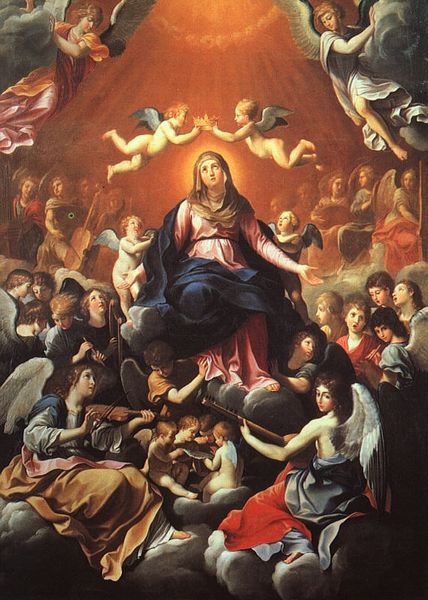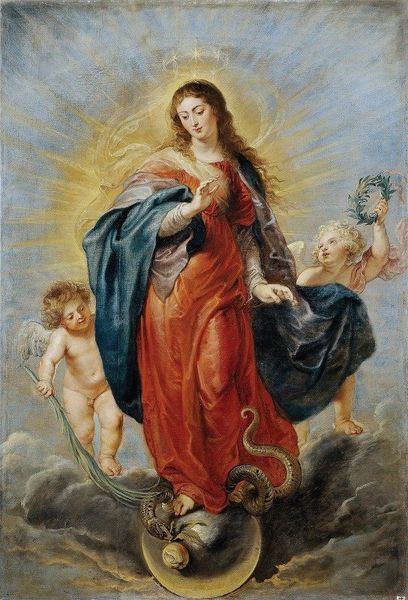
painting, oil-paint
#
portrait
#
allegory
#
baroque
#
painting
#
oil-paint
#
figuration
#
christianity
#
history-painting
#
italian-renaissance
#
virgin-mary
#
angel
Dimensions: 206 x 144 cm
Copyright: Public domain
Curator: This is Bartolomé Estebán Murillo’s, "The Immaculate Conception," painted around 1665, now residing at the Museo del Prado. What are your immediate impressions? Editor: There’s a luminous quality here. The Virgin Mary ascends amidst soft, swirling clouds; it’s a calculated upward movement emphasized by her gaze. It's all constructed to evoke a sense of the divine. Curator: Indeed. It's essential to understand the political and religious climate of 17th-century Spain. Murillo, deeply entrenched in Sevillian society, created this within the context of intense debates surrounding the Immaculate Conception. His rendering validates the Catholic dogma and becomes a powerful affirmation in a society grappling with issues of religious and national identity. Editor: And formalistically, note the use of color; the striking ultramarine of her mantle juxtaposed with the white robe anchors the figure, while the cherubic faces are rendered with a sfumato effect, almost dissolving into the divine light. Curator: These cherubs reflect the period’s societal fascination with childhood innocence and divine favor. Further, the positioning of Mary atop the crescent moon is no accident. That symbolism, drawn from the Book of Revelation, places her in a position of powerful authority but also evokes classical imagery and pre-Christian notions of female power and connection to lunar cycles. Editor: But the light! Murillo’s manipulation of light does more than simply illuminate; it elevates the subject. Note how the light defines the soft folds of her garments, lending an almost ethereal weightlessness. It creates the feeling of transcendence. Curator: Absolutely, and in her serenity, in her gesture, there's a narrative of female piety. But what kind of standard is that to hold up? We have to remember to contextualize this piece within a larger examination of power structures and the subjugation of women. What were the expectations and constraints of women within that society? And who does a piece like this actually serve? Editor: Perhaps it serves to reveal to us now just how carefully the aesthetic can be constructed to deliver a singular message. The artifice in its art, shall we say. Curator: Perhaps. In any case, reflecting on "The Immaculate Conception" reveals the potent intersections of religion, society, and artistic practice within Baroque Spain, while challenging contemporary viewers to reconsider the ever-evolving dialogues between art and cultural history. Editor: Yes, seeing it this way urges us to more acutely observe art’s structure, so as to not be overwhelmed by pretty aesthetic sentimentality.
Comments
No comments
Be the first to comment and join the conversation on the ultimate creative platform.
